| |
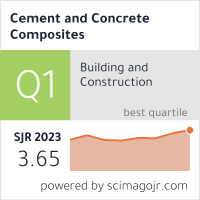
| |
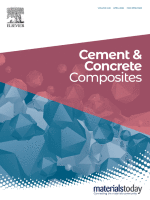
| |
Mechanical characterization of high-strength and ultra-high-performance engineered cementitious composites reinforced with polyvinyl alcohol and polyethylene fibers subjected to monotonic and cyclic loading
Mahyar Ramezani, Osman E. Ozbulut, and Muhammad M. Sherif*
This paper aims to comparatively evaluate the compressive and flexural response of high strength and ultra-high-performance polyvinyl Alcohol (PVA)- and polyethylene (PE)-reinforced ECCs at fiber contents of 1.75 vol% and 2.25 vol%, utilizing the same base mixture design. The base mixture was formulated with the objective of reducing the reliance on Portland cement by replacing 55% of it with supplementary cementitious materials (fly ash and silica fume). The flexural loading protocol consisted of monotonic loading with a displacement rate of 0.3 mm/min and 2.0 mm/min, and a repeated/cyclic loading with a displacement rate of 2.0 mm/min. The developed PVA- and PE-reinforced ECCs exhibited significant enhancements in average compressive strength, with PVA-reinforced ECC showing a 19% improvement and PE-reinforced ECC demonstrating a 39% improvement compared to the control specimen. In terms of flexural strength, PVA-reinforced ECC exhibited a 51% enhancement, while PE-reinforced ECC achieved… Details
|
1
|
01 Apr 2024
|   |
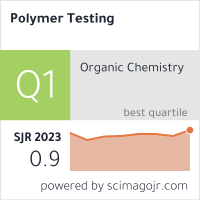
| |
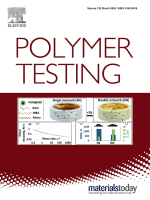
| |
Experimental investigation of long-term performance of fiber-reinforced epoxy and polyurethane polymer composites
Abdel-Hamid I. Mourad, Amir Hussain Idrisi, Asima Zahoor, Muhammad M. Sherif*, and Beckry M. Abdel-Magid
The primary challenge encountered by polymers and their composites when exposed to saline water is their inadequate ability to withstand wear and tear over time. With a potential to replace conventional materials the long-term performance of FRP composites is still a novice area. This manuscript thus, reports an experimental investigation and prediction of the durability of fiber-reinforced polymer composites exposed to seawater at different temperatures. E-glass/epoxy and E-glass/polyurethane samples were exposed to 23 °C, 45 °C and 65 °C seawater for up to 2700 days (90 months). Tensile tests evaluated the mechanical performance of the composite as a function of exposure time, and strength-based technique was used to assess the durability. The experimental results revealed that the tensile strength of E-glass/epoxy composite decreased by 6.3% and 48.9% after 90 months in seawater at 23 and 65 °C, respectively, whereas it declined by 37.6% and 63.6% respectively for E-glass/Polyurethane… Details
|
0
|
01 Mar 2024
|   |
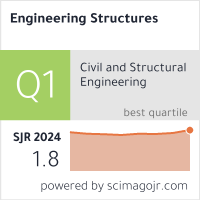
| |
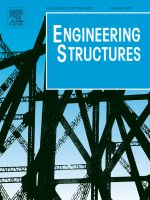
| |
Refined analysis of steel girder bridges for computation of live load distribution factors considering effects of freight and emergency vehicles
Abdou K. Ndong, Muhammad M. Sherif*, Bernie Kassner, Osman E. Ozbulut, and Devin K. Harris
Recent revisions to federal guidelines require state departments of transportation (DOTs) to rate bridges in their inventory with special hauling vehicles (SHVs) and emergency vehicles (EVs). In this research, refined analysis method was used to compute live load distribution factors of steel girder bridges considering the impacts of SHVs and EVs on the live load distribution behavior. To determine the live load distribution factors for interior and exterior girders under different lane loading conditions, finite element models of twenty-one steel girder bridges from the state of Virginia were developed and then analyzed. The effects of vehicle type and transverse position on the results of the refined analysis were evaluated. The results were comparatively evaluated with those obtained using AASHTO LRFD equations. The live load distribution factor of steel girder bridges with various geometrical parameters were predicted using a series of linear regression models that were built using… Details
|
0
|
15 Oct 2023
|   |

| |
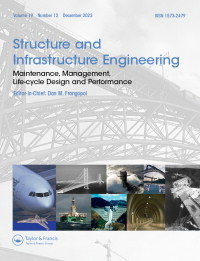
| |
Deep convolutional neural network ensemble for pavement crack detection using high elevation UAV images
Goodnews E. Amieghemen, and Muhammad M. Sherif*
Crack morphology is a major indicator of pavement distress and can indicate the extent of pavement rehabilitation required. Researchers have investigated the detection of cracks using images captured at close proximity. This is often time-consuming, labor-intensive, and inefficient. This research implemented the weighted ensemble technique for detecting pavement cracks on a pixel level using UAV images obtained at high elevations. The images were trained using five deep convolutional neural network architectures: UNet, Vgg-UNet, Resnet-UNet, Inception-UNet, and PaveNet. The pixel-level crack detection results are combined using the ensemble technique to maximize performance. The performance of the ensemble methodology was evaluated and compared with some of the state-of-the-art networks. The predictions obtained were used to estimate the area, length, and mean width of the cracks in the pavement images. It is worth noting that the proposed system can be applied to a specific road segment.… Details
|
1
|
02 Oct 2023
|   |
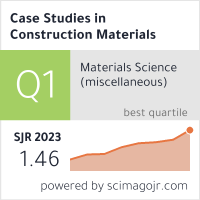
| |
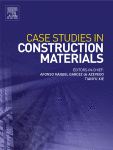
| |
Feasibility analysis for predicting the compressive and tensile strength of concrete using machine learning algorithms
Balahaha H.Z. Sami, Balahaha F.Z. Sami, Pavitra Kumar, Ali N. Ahmed, Goodnews E. Amieghemen, Muhammad M. Sherif*, and Ahmed El-Shafie
Concrete is the most utilized material (i.e., average production of 2 billion tons per year) for the construction of buildings, bridges, roads, dams, and several other important infrastructures. The strength and durability of these structures largely depend on the compressive strength of the concrete. The compressive strength of concrete depends on the proportionality of the key constituents (i.e., fine aggregate, coarse aggregate, cement, and water). However, the optimization of the constituent proportions (i.e., matrix design) to achieve high-strength concrete is a challenging task. Furthermore, it is essential to reduce the carbon footprint of the cementitious composites through the optimization of the matrix. In this research, machine learning algorithms including regression models, tree regression models, support vector regression (SVR), ensemble regression (ER), and gaussian process regression (GPR) were utilized to predict the compressive and tensile concrete strength. Also, the… Details
|
13
|
01 Jul 2023
|   |
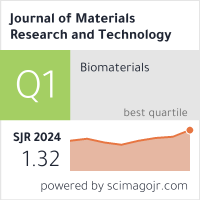
| |
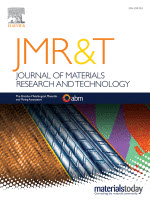
| |
Investigation of expansion percentages and groove inclusions on the performance of welded, expanded, welded-expanded tube-to-tubesheet joints
Dinu T. Thekkuden, Abdel-Hamid I. Mourad, Abdel-Hakim Bouzid, and Muhammad M. Sherif*
Tube-to-tubesheet joints play a crucial role in providing structural integrity to the shell and tube heat exchangers. This research investigated the combined effect of roller expansion percentages and grooves on the performance of expanded and welded-expanded tube-to-tubesheet joints. The results indicated that the joint strength of welded-expanded (except for 6% tube expansion and 2 grooves) and welded joints exceeded the nominal axial strength of the tube, 404.90 MPa. The highest tube pull-out strength of 290.77 MPa in the expanded only joint (10% tube expansion and 2 grooves), lesser than the axial strength of the tube by 28.25%, suggested avoiding the expansion process alone for 23 mm thick tubesheets. High dilution and inadequate minimum leak path (<1.78 mm) result in the failure of the welded-expanded joint. The highest hardness of 216 HV is formed at the weld zone comprising of a ferrite and widmanstatten ferrite. From 4% to 10% tube expansion percentages, the grains at the inner… Details
|
2
|
01 Jan 2023
|   |

| |
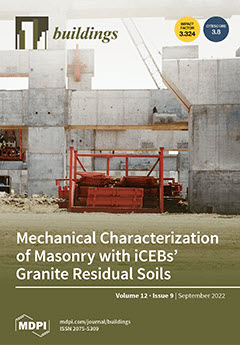
| |
Mechanical and Thermal Properties of Composite Precast Concrete Sandwich Panels: A Review
Herman Tawil, Chee G. Tan, Nor H.R. Sulong, Fadzli M. Nazri, Muhammad M. Sherif*, and Ahmed El-Shafie
Precast concrete sandwich panels (PCSPs) are utilized for the external cladding of structures (i.e., residential, and commercial) due to their high thermal efficiency and adequate composite action that resist applied loads. PCSPs are composed of an insulating layer with high thermal resistance that is mechanically connected to the concrete. In the recent decades, PCSPs have been a viable alternative for the fast deployment of structures due to the low fabrication and maintenance cost. Furthermore, the construction of light and thin concrete wythes that can transfer and resist shear loads has been achieved with the utilization of high-performance cementitious composites. As a result, engineers prefer PCSPs for building construction. PCSP design and use have been examined to guarantee that a building is energy efficient, has structural integrity, is sustainable, is comfortable, and is safe. Hence, this paper reviews the expanding knowledge regarding the current development of the mechanical… Details
|
9
|
01 Sep 2022
|   |
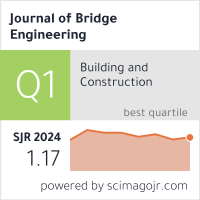
| |
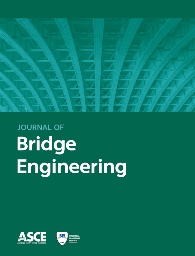
| |
Potential Improvement in Rating Factors of Concrete T-Beam Bridges through Refined Analysis: Evaluation of Distribution Factors
Abdou K. Ndong, Muhammad M. Sherif*, Bernie Kassner, Devin K. Harris, & Osman E. Ozbulut
This study explores the use of refined analysis methods to potentially increase load ratings of concrete T-beam bridges by obtaining a decrease in live-load distribution factors. The studied T-beam bridges are vulnerable to posting under consideration of the new federal regulations and when using conventional, simplified equations for load distribution factors. Finite-element models for a total of 25 in-service bridges were developed and analyzed under different vehicle loadings, including special hauling vehicles (SHVs). The effect of transverse positioning of the vehicle load on the computation of the distribution factors was also considered. The moment and shear effects in each girder were extracted and the distribution factors for the interior and exterior girders of the selected bridges were computed. These distribution factors were compared with those obtained from the AASHTO code-specified equations. The results were used to develop regression models to predict the percent change… Details
|
3
|
01 Sep 2022
|   |

| |
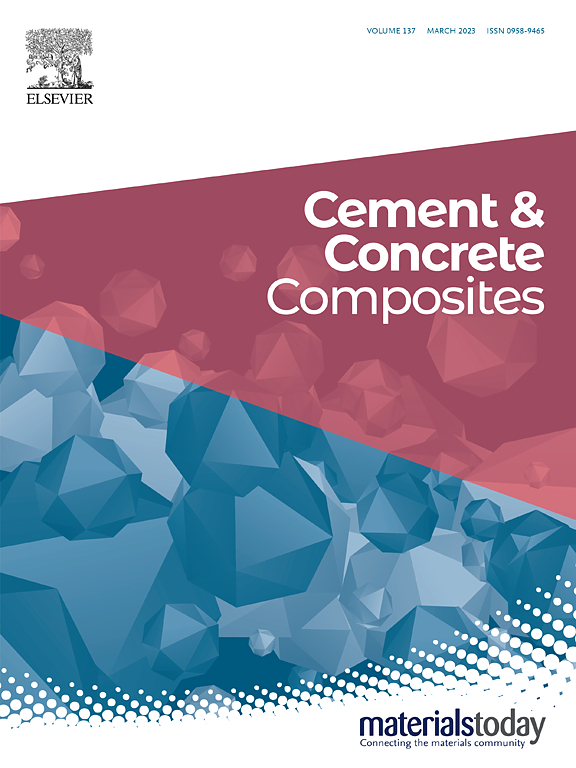
| |
Influence of carbon nanotubes on properties of cement mortars subjected to alkali-silica reaction
Mahyar Ramezani, Young H. Kim, Zhihui Sun, and Muhammad M. Sherif*
This research investigates the impact of carbon nanotubes (CNTs) on the expansion, mechanical properties, and microstructure of cement mortar subjected to alkali-silica reaction (ASR). A total of eight compositions were cast to investigate the influence of CNT surface condition, concentration and aspect ratio, and ultrasonication energy. Two types of CNTs were used as reinforcement: pristine CNTs with an aspect ratio of 800 (Type I) and COOH-functionalized CNTs with an aspect ratio of 2500 (Type II). CNTs were incorporated at concentrations of 0.1c-wt.% and 0.3c-wt.%. The results indicated that certain combinations of mix proportions could significantly mitigate the ASR-induced damages in the mortar bar test (ASTM C1260). Specimens reinforced with 0.1c-wt.% of Type I CNTs exhibited the highest resistance to alkali-silica reaction. While specimens reinforced with 0.3c-wt.% of Type II CNTs had marginal improvements. More specifically, specimens reinforced with 0.1c-wt.% of Type I CNTs reduced… Details
|
23
|
01 Aug 2022
|   |

| |
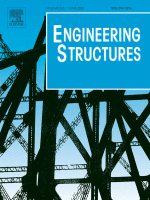
| |
Effect of corrosion on the tensile and fatigue performance of CFRP strand Sheet/Steel double strap joints
Xiang Ren, Muhammad M. Sherif*, Yaoyao Wei, Yuhui Lyu, Yamin Sun, and Osman E. Ozbulut
The applications of carbon fiber reinforced polymers (CFRPs) to strengthen aging steel structures and bridges have recently gained a wide interest due to their ease of use, corrosion resistance, and high tensile strength. In this research, the effects of aggressive corrosion environment on the mechanical and fatigue properties of CFRP strand sheet/steel double strap joints with various bond length were investigated. The CFRPs consisted of small-diameter strands stitched together to form a sheet. Initially, the stiffness, ultimate tensile and bond strength of the specimens were evaluated using a quasi-static tensile protocol. Then, specimens were exposed to an accelerated corrosive environments for 24, 48 and 72 h and their quasi-static properties were analyzed. Furthermore, the specimens were subjected to fatigue loading with a frequency of 10 Hz and a stress ratio of 0.1. Finally, a fatigue model was developed based on the observed results. The experimental results revealed that the use… Details
|
10
|
01 Jun 2022
|   |
 | Loading… |
     |